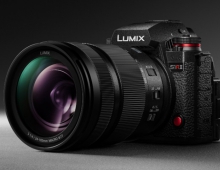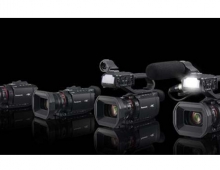
Panasonic Opens the World's Largest PDP Plant in Japan
Panasonic today held an opening ceremony of world's largest PDP plant in Hyogo Prefecture, western Japan. The plant covers an area measuring roughly 15 football fields.
The Amagasaki Plant, the company's third PDP facility in Japan, started production on September 16, 2005, two months earlier than originally planned. By the end of November, the Plant reached its full capacity of 125,000 units a month. Production at the plant remains consistent, achieving over 90 percent of the yield.
The Amagasaki Plant is the largest PDP production facility in the world. It incorporates next-generation technology to process large substrates to optimize production yields of display panels. The Plant uses Panasonic's "black-box" technologies to realize high-yield ratios which make the Plant highly efficient and maximize production.
The company's total PDP production capacity is 300,000 units a month, combining all four PDP plants including the First Ibaraki Plant (30,000 units), Second Ibaraki Plant (120,000 units) and Shanghai Plant (25,000 units).
Panasonic expects the global PDP demand to reach 10 million units in 2006 and 25 million units in 2010. To meet the accelerating demand, the company plans to bring forward the second phase of production at the Amagasaki Plant by four months to July 2006.
Stiff competition
Panasonic's investment is part of an industry-wide spending spree that has led to an oversupply of flat panels, pushing prices down sharply and pushing several players including Pioneer and Sony into the red.
Samsung SDI and LG Electronics are also pumping up capacity, but their plasma operations lost money in the second quarter and only managed to break even on an operating basis in the third.
Matsushita has been one of the few flat TV makers to post profits consistently because it possesses a rare combination of size, efficiency and the pricing power that comes with a strong brand, analysts said.
In the global market for plasma TVs, Matsushita held 29 percent in the July-September quarter, up 2 percentage points from a year earlier, according to research firm DisplaySearch. LG had 14.9 percent and Samsung Electronics 13.7 percent.
Pioneer recently shut down two production lines, but analysts are watching to see if it will join hands with FHP or even a South Korean maker to turn its plasma business around.
Another threat is the big push by Sharp Corp. , Sony and Samsung to sell more liquid crystal display TVs above 40 inches, encroaching on a segment of the market that until now has been dominated by plasma sets.
Matsushita also makes LCD TVs, but believes plasma is the best technology for TVs above 37 inches because they can be produced more cheaply at the larger sizes and offer better image quality on several measures including a wider viewing angle, smoother reproduction of moving images and a deeper black.
The Amagasaki Plant is the largest PDP production facility in the world. It incorporates next-generation technology to process large substrates to optimize production yields of display panels. The Plant uses Panasonic's "black-box" technologies to realize high-yield ratios which make the Plant highly efficient and maximize production.
The company's total PDP production capacity is 300,000 units a month, combining all four PDP plants including the First Ibaraki Plant (30,000 units), Second Ibaraki Plant (120,000 units) and Shanghai Plant (25,000 units).
Panasonic expects the global PDP demand to reach 10 million units in 2006 and 25 million units in 2010. To meet the accelerating demand, the company plans to bring forward the second phase of production at the Amagasaki Plant by four months to July 2006.
Stiff competition
Panasonic's investment is part of an industry-wide spending spree that has led to an oversupply of flat panels, pushing prices down sharply and pushing several players including Pioneer and Sony into the red.
Samsung SDI and LG Electronics are also pumping up capacity, but their plasma operations lost money in the second quarter and only managed to break even on an operating basis in the third.
Matsushita has been one of the few flat TV makers to post profits consistently because it possesses a rare combination of size, efficiency and the pricing power that comes with a strong brand, analysts said.
In the global market for plasma TVs, Matsushita held 29 percent in the July-September quarter, up 2 percentage points from a year earlier, according to research firm DisplaySearch. LG had 14.9 percent and Samsung Electronics 13.7 percent.
Pioneer recently shut down two production lines, but analysts are watching to see if it will join hands with FHP or even a South Korean maker to turn its plasma business around.
Another threat is the big push by Sharp Corp. , Sony and Samsung to sell more liquid crystal display TVs above 40 inches, encroaching on a segment of the market that until now has been dominated by plasma sets.
Matsushita also makes LCD TVs, but believes plasma is the best technology for TVs above 37 inches because they can be produced more cheaply at the larger sizes and offer better image quality on several measures including a wider viewing angle, smoother reproduction of moving images and a deeper black.





















